Over the next few days we will be posting interviews here with both speakers and participants of the conference, and you'll have a front row seat for a special roundtable discussion on building an acupuncture sports medicine practice.
Listen in for a wealth of practical wisdom on the treatment of sports and orthopedic issues.
The conversations from this mini-series
on Sports Acupuncture
is brought to you in part with the generous support from:
We are going to get into the backstory on this essential tool that we use everyday in the work we do. And we’re going to talk a little about a new needled being introduced here at the conference that has been specially designed and manufactured for sports and orthopedic acupuncture
- The state and quality of acupuncture needles 40 years ago
- How the disposable single use needle changed acupuncture in the USA
- Today needles range from handmade to robotic high-tech
- What kinds of testing are done to assure needle quality
- Coated vs non-coated needles
- The importance of testing needle products to be sure you are getting what you think are getting and for basic safety concerns
- Harder and softer needles for different kinds of acupuncture
- The advantages of a more rounded tip to the needle
- New needle being introduced at the Sports Acupuncture Alliance’s conference
The guest of this show
Matt Pike
I’m am the CEO of Lhasa OMS, we are a family owned business that I co-manage with my wife, Colleen. Lhasa OMS has been run as if all of our employees are family ever since my step-father, Tom Riihimaki started the company in 1979. Tom instilled into every person who works with us that there is nothing more important than giving access to acupuncture to all who can benefit from it. We do that by ensuring practitioners have the best quality products for the best prices. Tom also wanted to lift up the profession when no one was there to do so. He personally donated money to the only acupuncture college in the U.S. to ensure they could survive difficult financial times. He also fought to import needles so practitioners had easy access to the tools that lead to patient wellness.
We have picked up Tom’s mandate that we do well by doing good. Today, our growing donation program is equally important to me as is our growing business. In fact, it is the part of Lhasa OMS of which I am the most proud. Every year, we donate not just acupuncture needles and dollars, but hundreds of hours of volunteer time. We are so very proud to support humanitarian relief organizations such as Acupuncturists Without Borders, acupuncture schools, state and local organizations, and dozens of other individual efforts. We do this because it is simply the right thing to do, it’s built into the core of our company. This is what keeps me going every day.
It is an honor for me to be in a position to support the growth of the acupuncture industry. We know the benefits of treatment. We want all people in the U.S. to experience it. We work tirelessly to achieve these goals. I am proud of all my team has accomplished, but realize there is more we can do to advance the profession. Working with cutting edge technology and learning resources, such as Qiological helps us continue to grow acupuncture’s adoption so we all can serve and benefit more people.
He's a busy guy, but we managed to grab a few minutes to talk about acupuncture, community and the inspiration and effort behind this conference.
- The inspiration behind the Sports Acupuncture Alliance’s conference
- Division and connectedness within the acupuncture community
- Perceptual frameworks and its relation to how we work
- Role of the fascia and sinew channels
- The long-term creativity that can be generated by collaborative effort
The guest of this show
Chad Bong
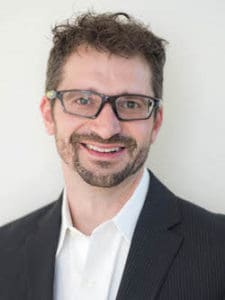 Chad holds Masters Degrees in both Oriental Medicine and Exercise Science as well as an 800-hour certification in massage therapy. Combining the knowledge of both Eastern and Western views gives him a unique perspective on how injuries happen and how they can be treated.
Chad holds Masters Degrees in both Oriental Medicine and Exercise Science as well as an 800-hour certification in massage therapy. Combining the knowledge of both Eastern and Western views gives him a unique perspective on how injuries happen and how they can be treated.
Chad lives in the Philadelphia area. He currently practices at Philadelphia Sports Acupuncture where he treats mostly active people and athletes in sports ranging from fencing to football. Additionally he sees patients at the University of Pennsylvania Student Health Center.
He teaches at the WON Institute near Philadelphia and Tristate College of Acupuncture in New York City. And continues to assist Whitfield Reaves in teaching sports medicine acupuncture around the world.
Keep up to date with the goings on at the Sports Acupuncture Alliance.
Visit Chad's website at www.phillysportsacupuncture.com.
Listen in to his podcast that is dedicated to acupuncture and sports medicine.
Listen in for a conversation around the clinical power of the sinew channels and why brushing up on your anatomy will help you get better clinical results and improve your confidence with deep needling.
- How Anthony went from Taichi to acupuncture
- The importance of the longitudinal tracts of myofacial, tendono-muscle meridians and how they connect the various body structures together
- The Jing-Jin, the tendon channels can reach deeply into the body
- Using the Jing-Jin to locate channel pathology
- Use of orthopedic testing to understand branch and root of a patients problem
- Use of cupping and guasha for breaking up blood stasis and phlegm
- Needling into joints, ligaments and joint capsules to help stabilize joints
- The importance of knowing your deep anatomy
The guest of this show
Anthony Von der Muhll
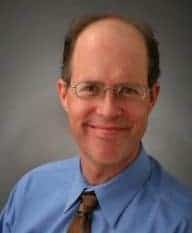 My education and training in sports, orthopedic and neuro-musculoskeletal injuries and pain began with recovery from bike and soccer injuries I suffered in my ‘twenties. I had always taken good health for granted, and learned a lot about chronic pain and disability through my journey to recovery. I discovered taiji worked better for me than conventional physical therapy, which sparked my personal and then professional interests in acupuncture orthopedics and other oriental medicine physical modalities.
My education and training in sports, orthopedic and neuro-musculoskeletal injuries and pain began with recovery from bike and soccer injuries I suffered in my ‘twenties. I had always taken good health for granted, and learned a lot about chronic pain and disability through my journey to recovery. I discovered taiji worked better for me than conventional physical therapy, which sparked my personal and then professional interests in acupuncture orthopedics and other oriental medicine physical modalities.
I was Licensed as an Acupuncturist in 2003, and was the first graduate of the Five Branches University’s’ Integrative Sports Medicine program. I have since served as a Clinical Instructor and Associate Professor at the Five Branches since 2005, and as an Instructor in the Doctorate of Acupuncture and Oriental Medicine Program of the Academy of Chinese Culture and Health Sciences beginning in 2017.
I have sought to integrate contemporary orthopedics and physical rehabilitation with classical Chinese Medicine, and worked as a sports massage therapist, physical therapy aide, and athletic training assistant in addition to working as licensed acupuncturist in multi-disciplinary clinics. I love trying out a variety of modalities on my own injuries first which has helped me with choosing when and how to use them with patients. In addition to clinical practice, time spent in cadaver and anatomy labs has also been invaluable in teaching me respect for and appreciation for the uniqueness of everyone’s body and for the miracle of how our bodies move and change through time.
David Legge's book on the Jing-Jin
The Dao of Chinese Medicine, by Donald Kendall has some good resources on the Jing-jin
In this episode we take at look at the “curious organ” of the brain, as our guest of this episode gives us a glimpse into the power and usefulness of understanding modern functional neurology as a way to better understand and treat the effects and often hidden pathologies of concussion and traumatic brain injury.
- How Amy got started in neurology
- Amy's dive into functional neurology
- Neurology can help to make sense of oddball signs and symptoms
- The importance of neurological assessment
- Eye exercises and particular kinds of movement can help to change the brain
- Basic exam techniques
- Parallels between acupuncture and functional neurology
- The Huang Di Nei Jing's take on concussion
The guest of this show
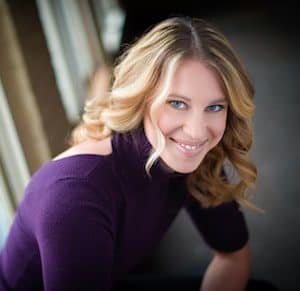 Dr. Moll is a Doctor of Acupuncture and Oriental Medicine specializing in neurological disorders, chronic pain, and concussion recovery. She is a faculty member of the Carrick Institute of Clinical Neuroscience and Rehabilitation. She teaches courses for healthcare practitioners across the country on neurological exam techniques, functional neurology, dysautonomia, and concussion recovery, and has been a featured speaker in veterans groups on the topic of brain health.
Dr. Moll is a Doctor of Acupuncture and Oriental Medicine specializing in neurological disorders, chronic pain, and concussion recovery. She is a faculty member of the Carrick Institute of Clinical Neuroscience and Rehabilitation. She teaches courses for healthcare practitioners across the country on neurological exam techniques, functional neurology, dysautonomia, and concussion recovery, and has been a featured speaker in veterans groups on the topic of brain health.
While in Dallas, Texas, Dr. Moll was the lead researcher on a randomized clinical trial on the effects of acupuncture on cerebral blood flow velocity in mixed martial arts fighters following concussion. She was the team acupuncturist for the professional MMA fighters at Fortis MMA in Dallas Texas, working with UFC and Legacy fighters. She is now back in private practice in Bend, Oregon providing a unique combination of acupuncture, Chinese medicine, and functional neurology for the treatment of neurological disorders.
Visit Amy's website where you will find a wealth of information in her blog posts.
And even though you didn't hear about acupuncture in the 1984 Olympics, it was there.
Our guest in this episode has been working with sports acupuncture for almost 40 years.
Listen in to this conversation that touches on topics that range from the importance of precise needle location to the valu of stillness in your acupuncture practice.
- How people are different now than in the 1980’s
- Use of the sinew channels
- Knowing when to use distal and local points
- The problems with an over-amped neurological system
- Your needle needs to be precisely placed, you need to know what anatomical level you are working with
- Make sure you working with the right meridian, referral patterns can trick you
- The importance of stillness
The guest of this show
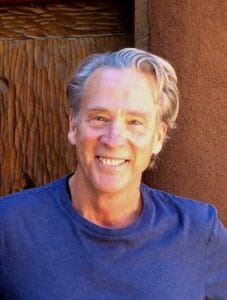 Whitfield Reaves first began the study of acupuncture in 1976. After being treated with acupuncture for the first time, he knew that this would be his profession and lifelong work. Dr. Grace Liu, both an acupuncturist and a medical doctor from China, would become Whitfield’s first teacher. A formal apprenticeship with Dr. Liu began in 1977, spending a year and a half together in a traditional teaching relationship. When the first acupuncture college was approved by the medical board in the State of California, a move to Los Angeles was in order.
Whitfield Reaves first began the study of acupuncture in 1976. After being treated with acupuncture for the first time, he knew that this would be his profession and lifelong work. Dr. Grace Liu, both an acupuncturist and a medical doctor from China, would become Whitfield’s first teacher. A formal apprenticeship with Dr. Liu began in 1977, spending a year and a half together in a traditional teaching relationship. When the first acupuncture college was approved by the medical board in the State of California, a move to Los Angeles was in order.
After graduation in 1981, he continued his studies in Beijing, China. During this internship, his group rotated in three hospital clinics that were part of Beijing Medical College, treating and observing hundreds of patients a week. On his return to the US, Whitfield worked on a doctorate program, resulting in his thesis titled “Acupuncture and the treatment of common running injuries“. It was one of the first articles in English that integrated traditional Chinese theory of acupuncture with western orthopedic and sports medicine. In 1983, Whitfield received his Doctorate of Oriental Medicine (OMD) degree.
Whitfield is the author of Acupuncture Handbook of Sports Injuries and Pain, and offers an apprenticeship program for those looking to deepen their skills in this area of study and practice.
Whit's book on treating sports injuries and pain is a classic in the field. It's a wise addition to your library.
Listen in to this conversation between some seasoned practitioners considering the trajectory of practice across the span of decades.
- Teammates have a tight bond, do a good job and they'll refer you
- Understand who they are and what they're doing. Speak their language
- Should you focus treatments for performance or recovery?
- Advantages/Disadvantages of where you treat
- Biggest AHA! moments from working with athlete
- How to work with local and pro teams
- The future of sports medicine
Here's a few of the many voices that I've learned from this weekend.
- What got Matt started with acupuncture
- Current trends of concern with orthopedic acupuncture
- The vital connection between the internal zangfu and external musculo-skeletal systems
- We often imagine separation where there actually is unity
- There is a lot of important information in the classics
- Why athletes heal faster
- The way that we practice is the way that we understand
- What fuels and motivates you in the decades after the practice is stable
- Managing our patients healthcare and accountability
- Considering the Spirit
- When words do the work of needles
- Considering the fascia
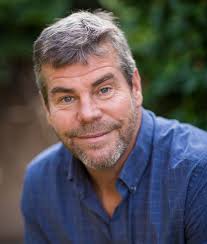 Matt Callison’s unique ability to blend Chinese Medicine with Sports Medicine for over 25 years is demonstrated by his excellent reputation. This is particularly evident in his educational program, the “Sports Medicine Acupuncture Certification Program,” which is attended by acupuncturists worldwide. He has over 20 years experience in cadaver dissection that has helped him to further broaden and deepen his educational program for the acupuncturist. Mr. Callison has had a clinical practice for over 26 years and is well known for developing innovative and successful treatment protocols for musculoskeletal injury. He has published many articles including a clinical study on acupuncture and tibial stress syndromes (shin splints) as well as an article on Sports Related Muscle Tension Headaches in the Journal of Chinese Medicine. Furthermore, Mr. Callison is well-known for his work with professional athletes. He is the creator of the Motor Point and Acupuncture Meridian Chart as well as the author of three publications—The Motor Point Manual, Motor Point Index and, in press, The Sports Medicine Acupuncture textbook.
Matt Callison’s unique ability to blend Chinese Medicine with Sports Medicine for over 25 years is demonstrated by his excellent reputation. This is particularly evident in his educational program, the “Sports Medicine Acupuncture Certification Program,” which is attended by acupuncturists worldwide. He has over 20 years experience in cadaver dissection that has helped him to further broaden and deepen his educational program for the acupuncturist. Mr. Callison has had a clinical practice for over 26 years and is well known for developing innovative and successful treatment protocols for musculoskeletal injury. He has published many articles including a clinical study on acupuncture and tibial stress syndromes (shin splints) as well as an article on Sports Related Muscle Tension Headaches in the Journal of Chinese Medicine. Furthermore, Mr. Callison is well-known for his work with professional athletes. He is the creator of the Motor Point and Acupuncture Meridian Chart as well as the author of three publications—The Motor Point Manual, Motor Point Index and, in press, The Sports Medicine Acupuncture textbook.
Matt earned his Bachelor’s degree in Physical Education/Sports Medicine from San Diego State University in 1985. He worked in the Sports Medicine field at Alvarado Sports Medicine clinic in San Diego and Scripps Hospital in La Jolla, CA for six years. In 1991 he received his Master’s Degree in Traditional Oriental Medicine from Pacific College of Oriental Medicine, where the class he developed, “Treatment of Orthopedic Disorders,” is still being taught. Matt continues to guest lecture in many acupuncture doctoral programs across the United States.
Links and Resources:
Visit Matt's website for more information about this classes and to read this blog.
